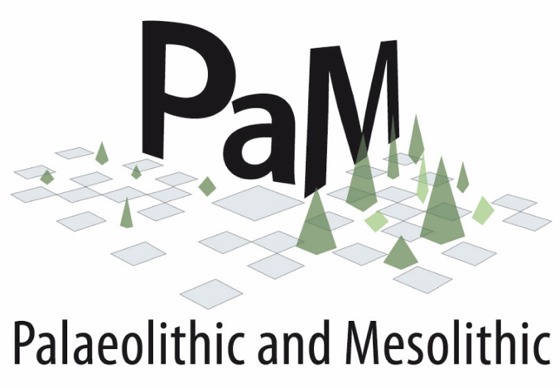Annemieke Milks, Silje Evjenth Bentsen and Sonja B. Grimm (PaM Co-Chairs)

The Palaeolithic and Mesolithic Community (PaM) was founded in 2018 by Sonja B. Grimm and Natasha Reynolds with the aim of increasing the participation and visibility of Palaeolithic and Mesolithic archaeologists within the annual EAA meetings. Since its inception nearly five years ago, the PaM community has continued to grow, and is now one of the larger EAA communities. When Natasha Reynolds stepped down, Sonja Grimm remained as a co-chair. She was joined in 2020 by Annemieke Milks and in 2021 by Silje Evjenth Bentsen.
We can point to an increase in the number of PaM community sessions at the EAA Annual Meetings as evidence for success in our community aims. PaM officially began in the 2019 programme with twelve associated sessions but dropped in 2020 to seven PaM sessions due to the pandemic. Nevertheless, for the 2021 virtual meeting, we had eight PaM sessions, covering such topics as ‘Climate change to activism’, ‘Modeling complexity’, ‘The Late Pleistocene-Holocene transition’ and the annual PaM discussion session entitled ‘Imaginations and imaginaries of the Palaeolithic and Mesolithic – distorted views, embellishment, and what we make of it’. The sessions reflected the breadth of research methods investigating the Palaeolithic and Mesolithic, including scientific and quantitative approaches as well as broader theoretical challenges.
Even more excitingly, the 2022 ‘Re-integration’ meeting in Budapest had the highest number of PaM sessions yet! Over 20 sessions were associated with PaM. Once again, these demonstrated the incredible quality and diversity of research and are tackling big questions about human evolution, technological innovation, stone tools, human adaptation and resilience, raw material selection, climate change, and more. With some sessions reaching into the Neolithic and even younger periods, we also have made progress in our aim to integrate the PaM community into the wider European archaeological community. We had a special discussion session which this year was entitled ‘The Societal Impacts of Climate Changes in the Past – What Can Hunter-Gatherer Archaeology Contribute to the Current Debate?’. This discussion was well-attended online and in person. The engagement with the impact our discipline can and should have on the contemporary challenges of climate change, as well as the impact archaeological practice has for climate change has continued beyond those few hours in Budapest. With so many sessions, it was a challenge for members to be able to attend all the sessions they wished. Nevertheless, it was a privilege to be so spoiled for choice.
We have worked hard to increase membership and engagement through our EAA community webpage, our independent webpage, and our presence on social media including Twitter (@EAAPaM), Instagram (@eaapam) and a dedicated Facebook page. We have found these additional spaces to be fruitful, as they have brought further members to our community as well as to the EAA community as a whole. At present, we have 172 members in total of which 104 are also EAA members. They come from 30 countries in Europe, Asia, and the Americas. We anticipate that this will increase further in the future.
In Budapest we had our first formal, face-to-face PaM meeting since the pandemic, which included a virtual option for those who were not able to join in person. Alongside this meeting, we held an informal PaM gathering (as we have done at past in-person conferences), which gave our members the chance to socialise.
As with the wider sector, Palaeolithic and Mesolithic archaeologists are facing challenges on a global scale. These include but are not limited to:
- Threats of department closures brought on by challenges related to Brexit and defunding by governments of social sciences and the arts
- Increasing job precarity
- Continued lack of diversity
- Unequal opportunities for women, and harassment in the workplace
- Conflict
- Threat of climate change to heritage
As a community, we hope to support our members in meeting these challenges over the coming years. We will continue to connect with other EAA communities like AGE and ECR, in order to seek to facilitate discussion sessions addressing contemporary challenges, such as decolonisation, and use our community to speak up for those affected by various difficulties. The PaM newsletter and meetings serve as a platform for showcasing the amazing research and initiatives of Palaeolithic and Mesolithic colleagues on a global scale. A robust PaM community can also provide the scaffolding for networking, discussions, collaborations and mentorships. Future possibilities also include serving as a source of experts for media commentary and policy advisers. We look forward to continuing to improve the visibility and involvement of Palaeolithic and Mesolithic archaeologists within the wider EAA organisation and meetings, including in Belfast in 2023.
Go back to top